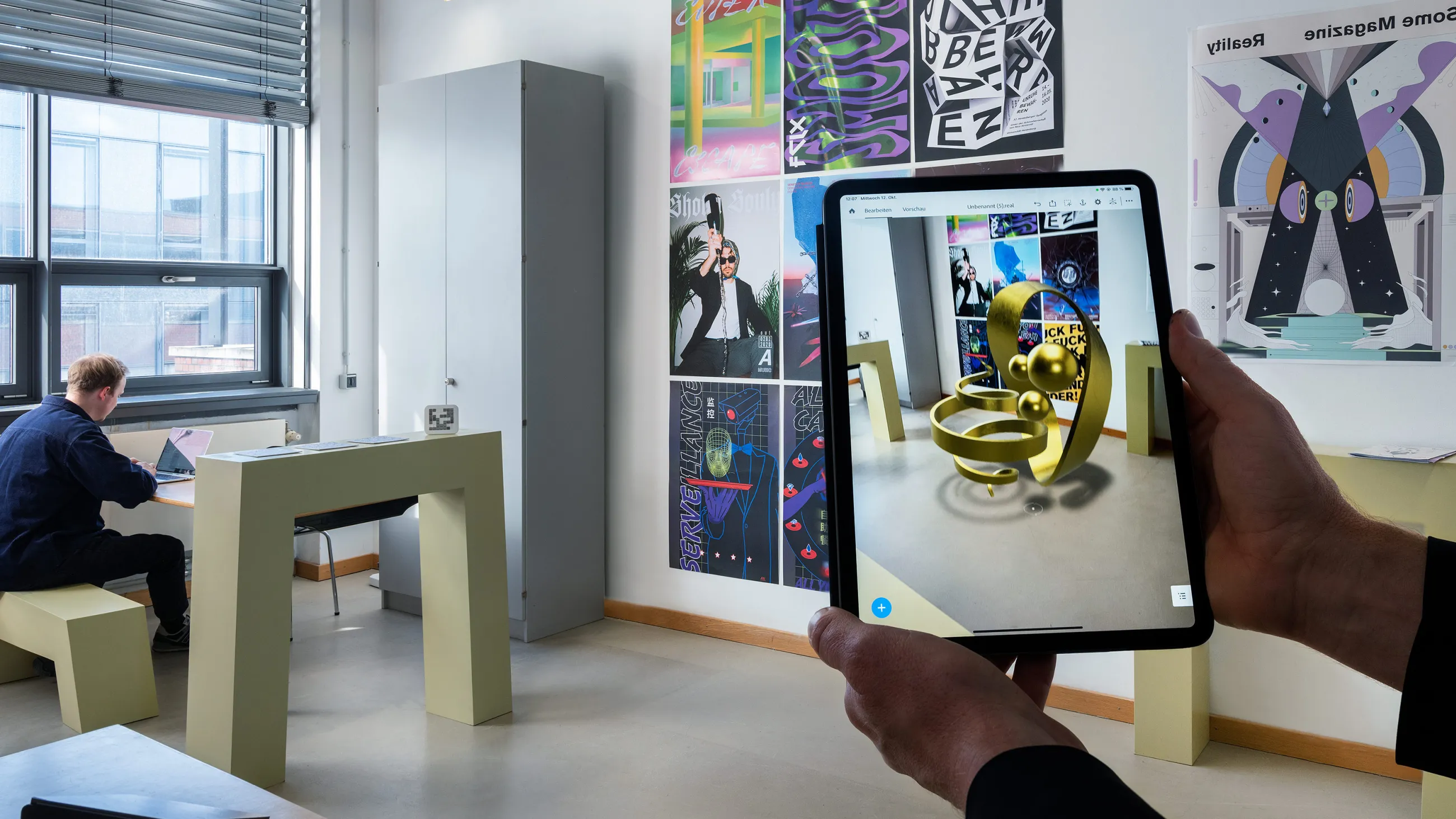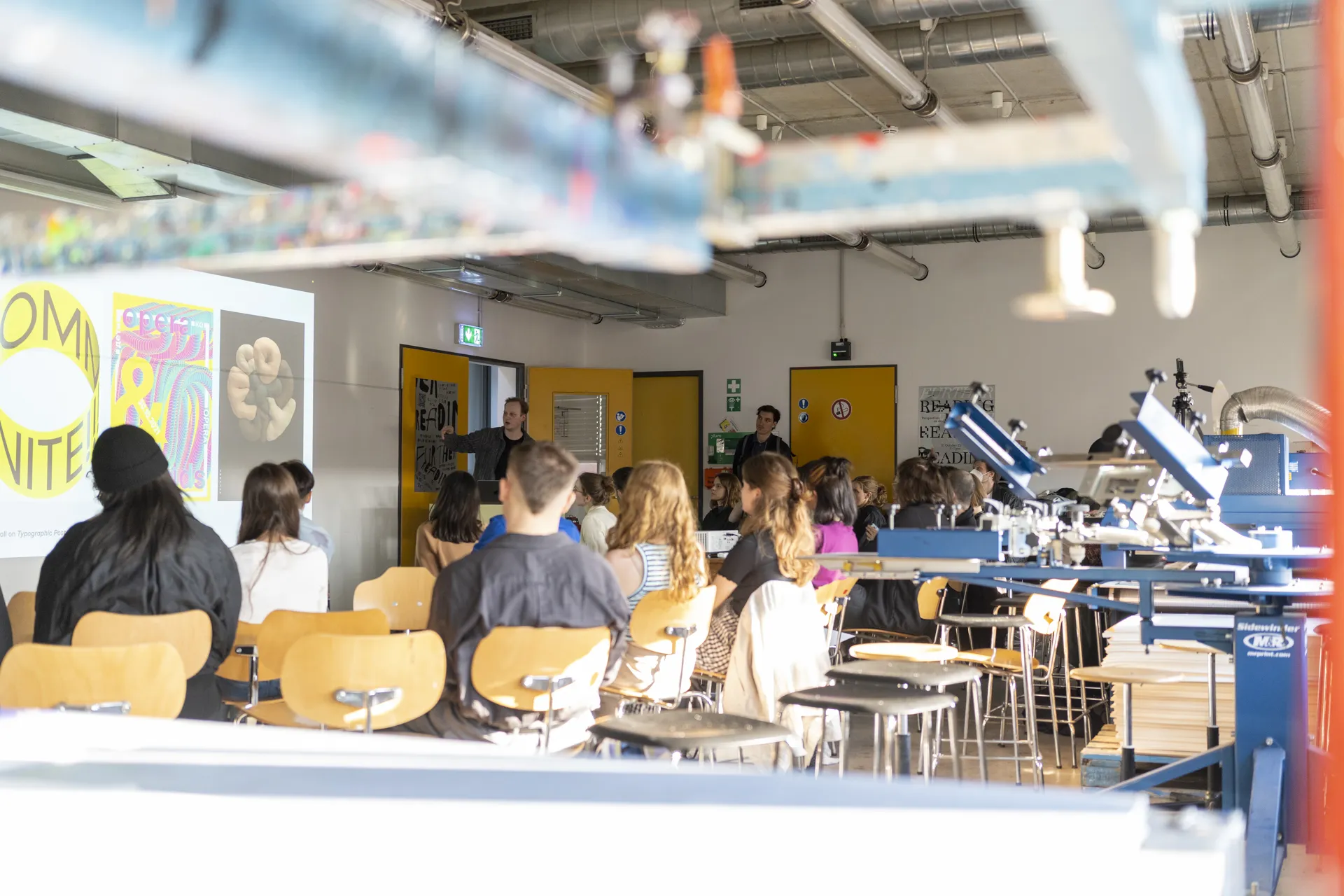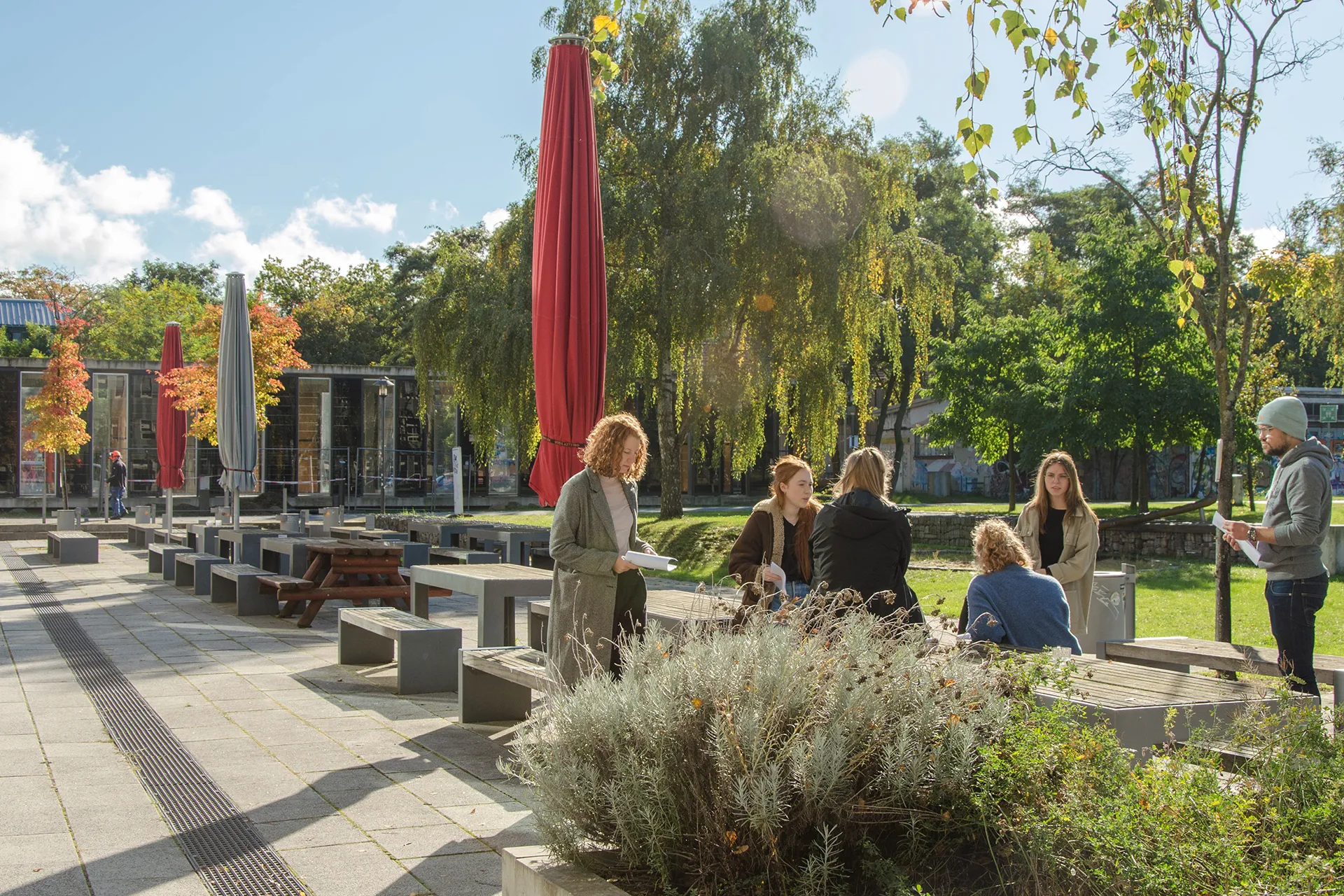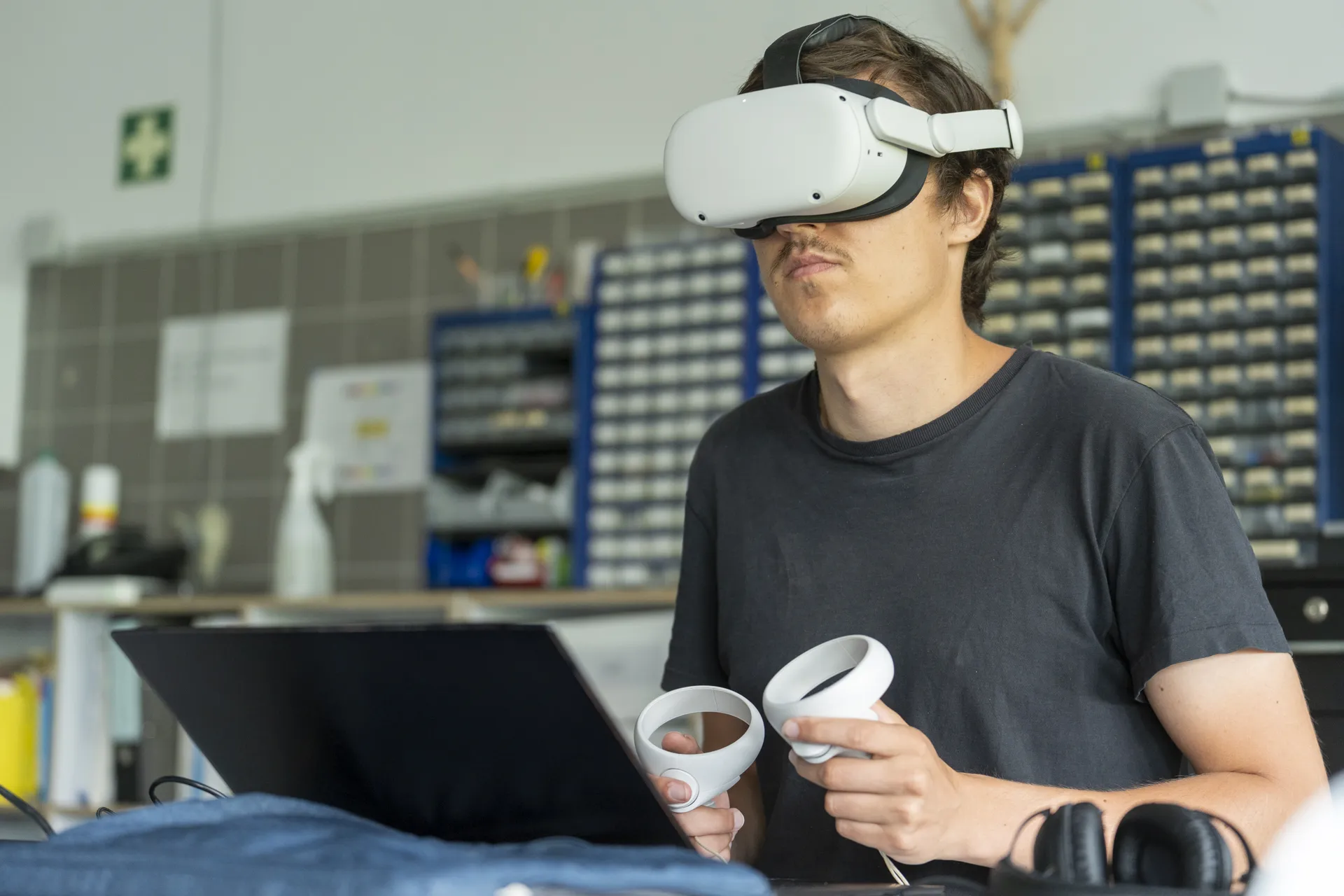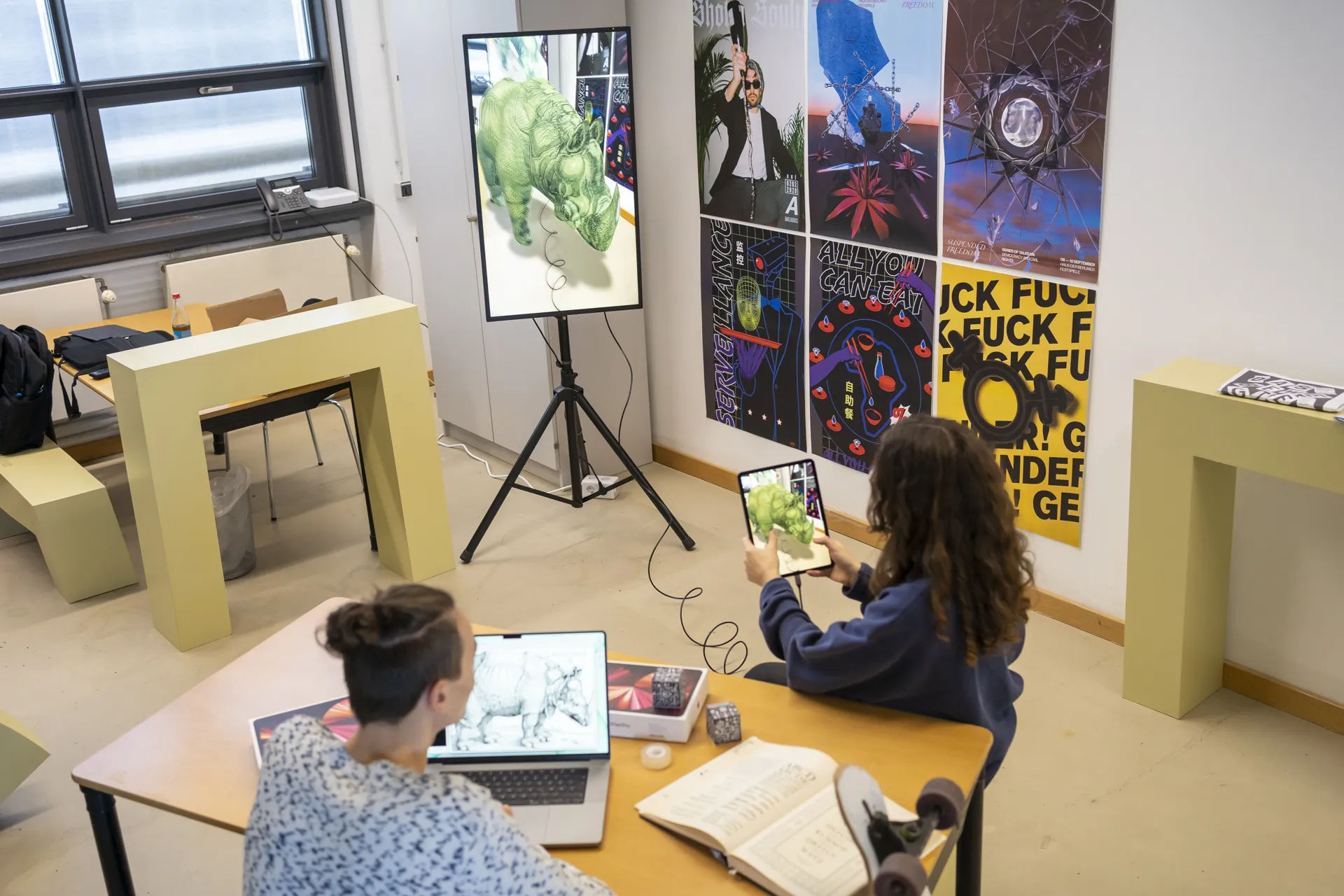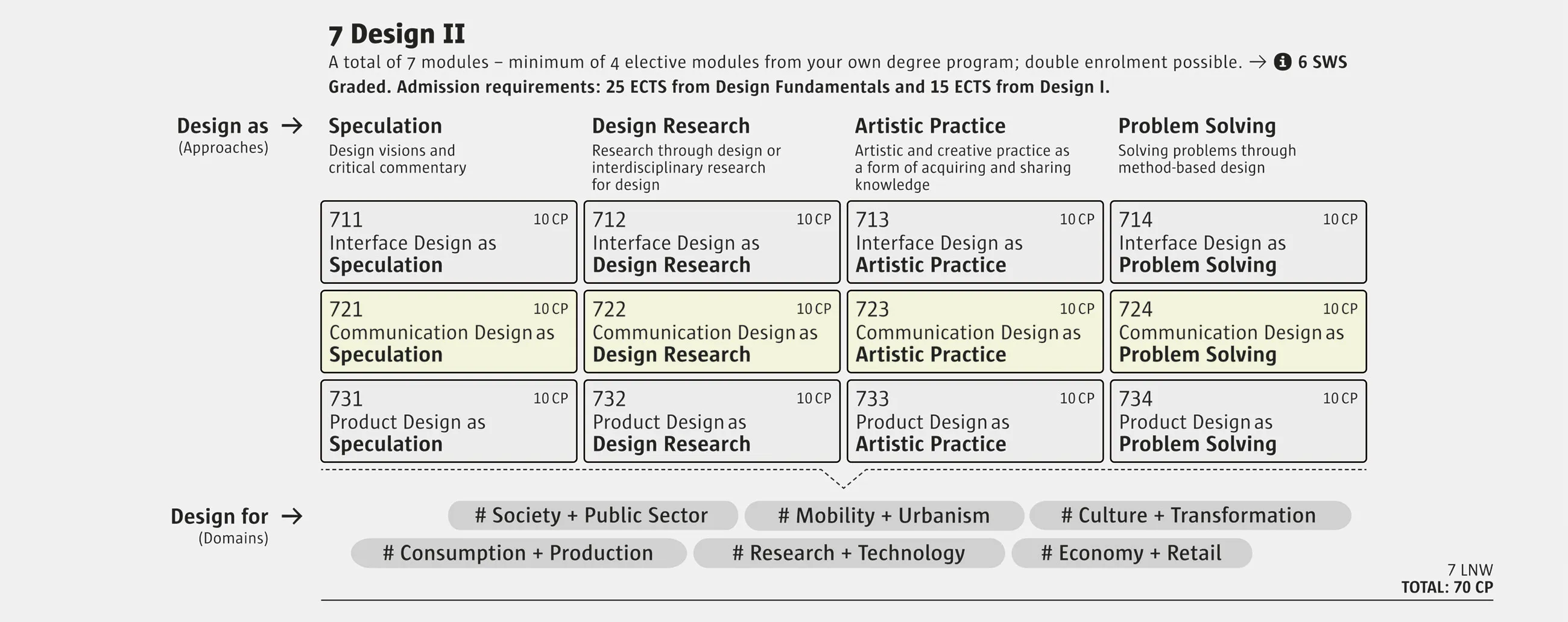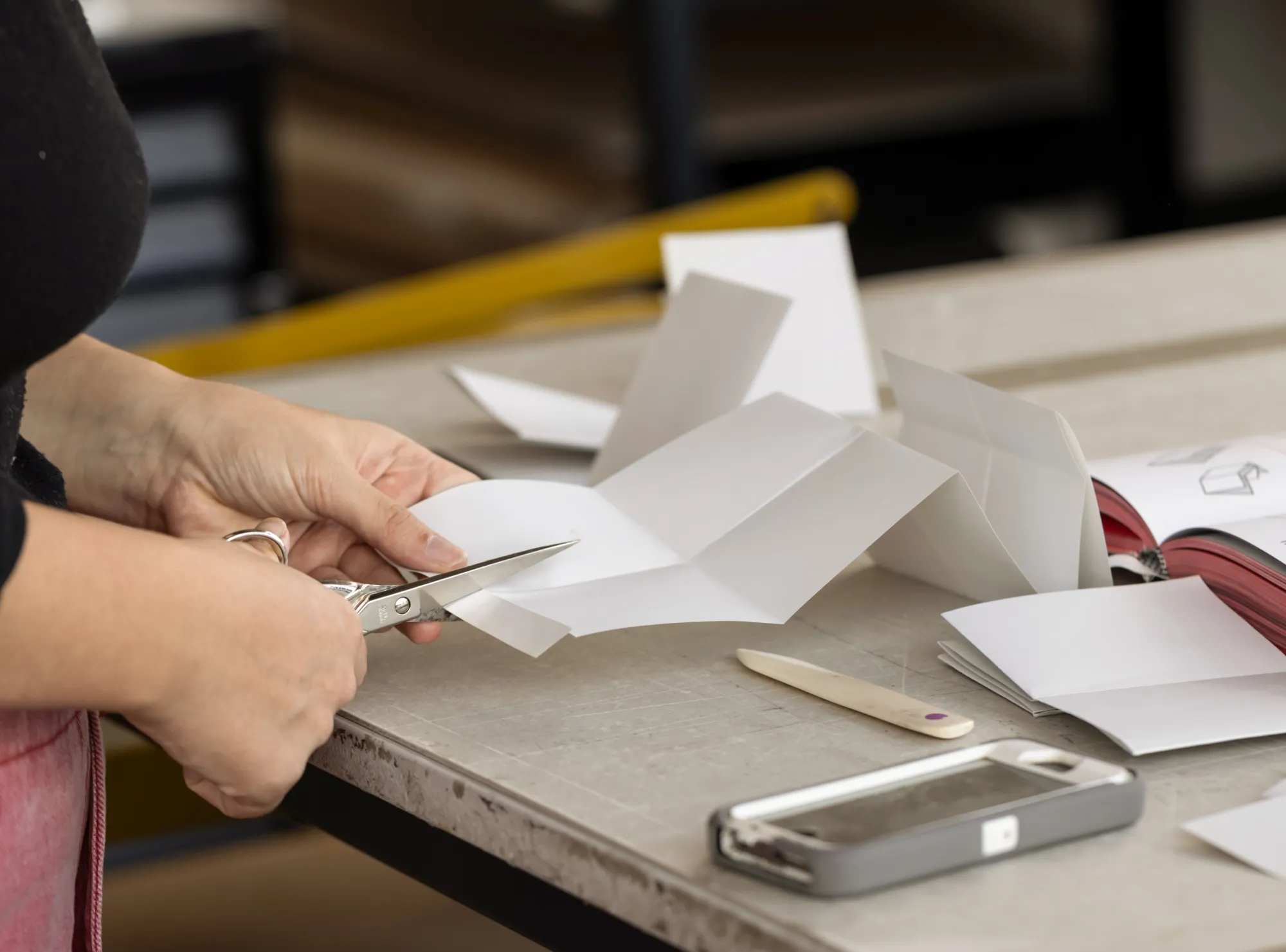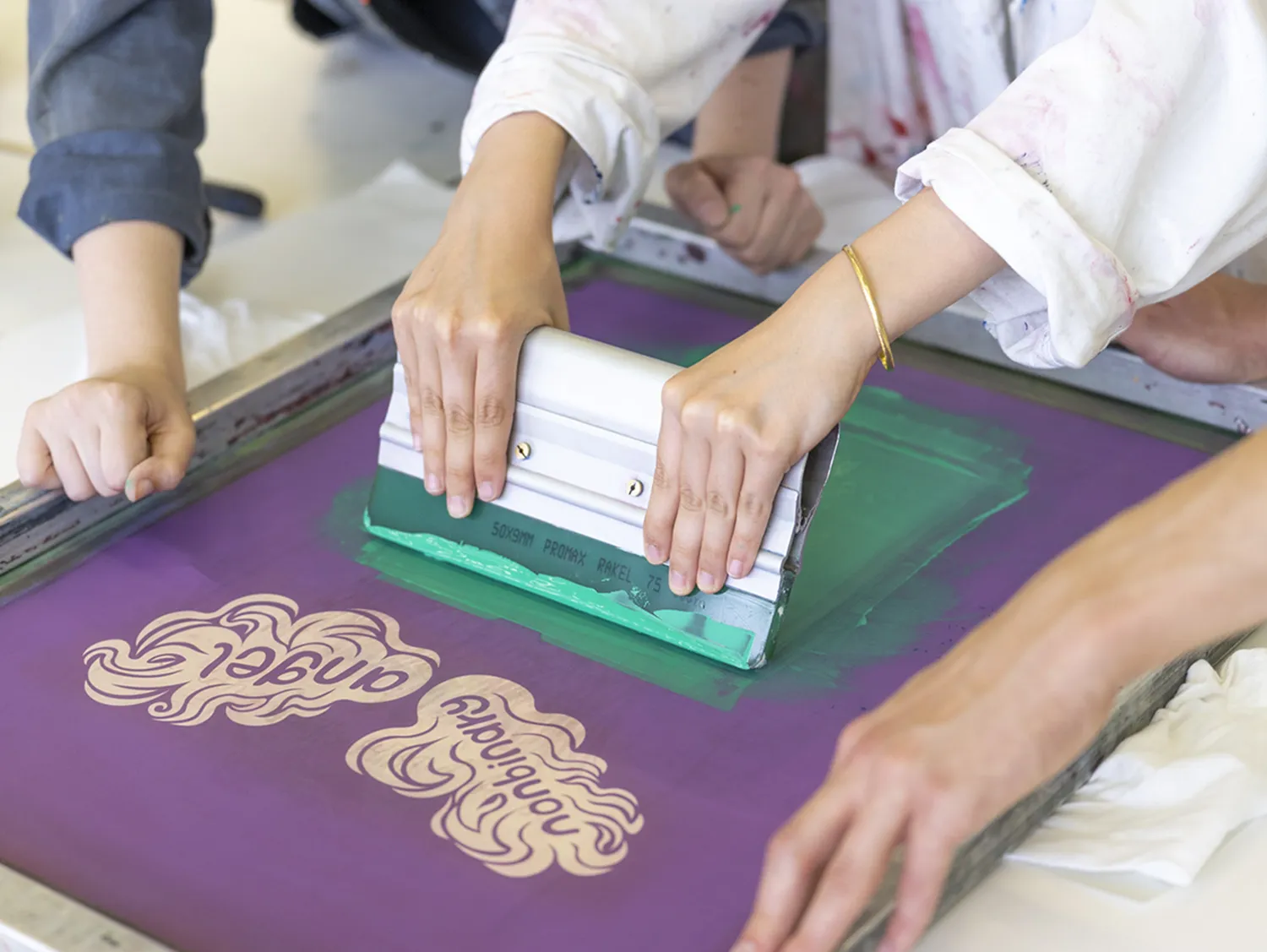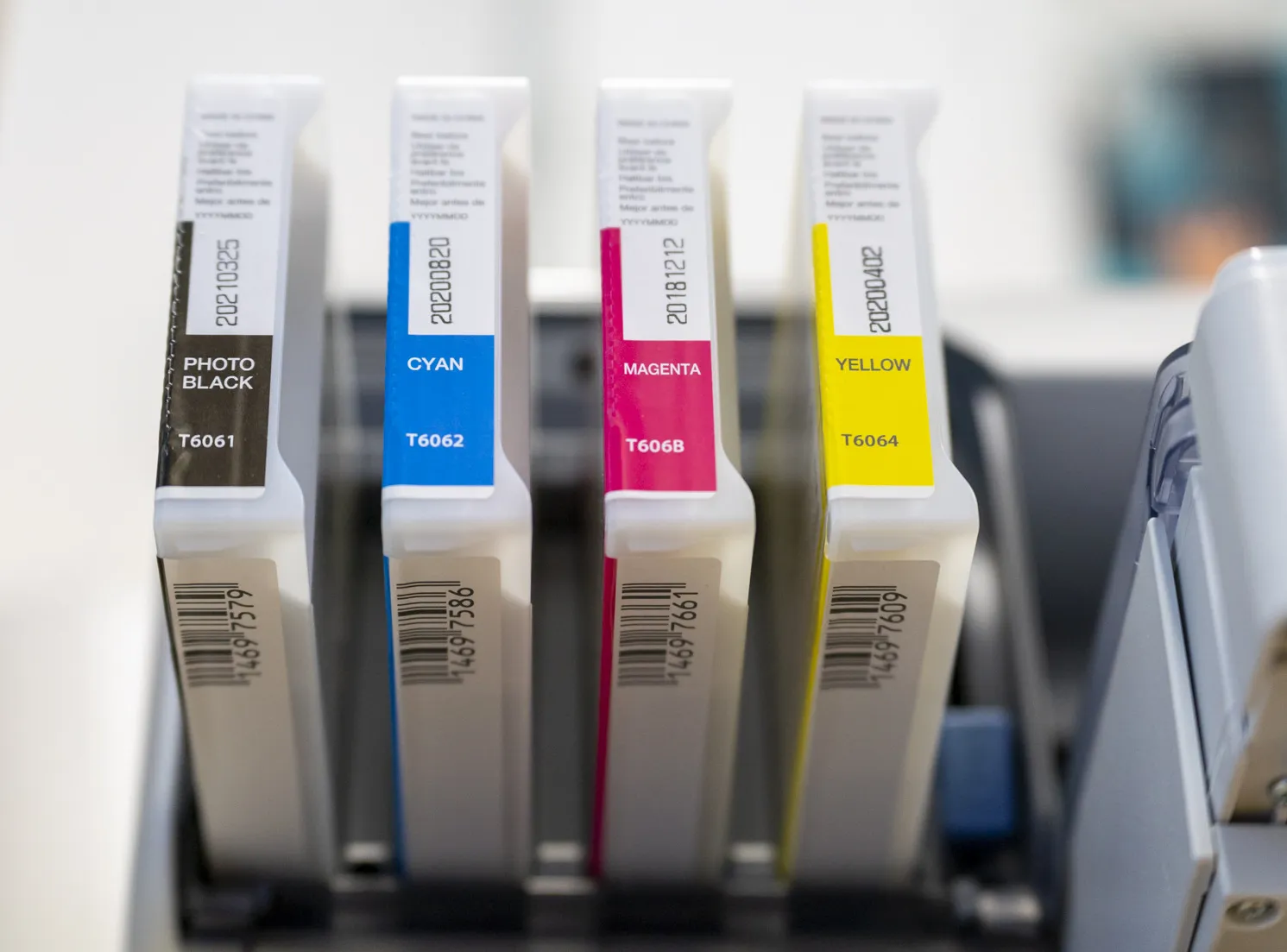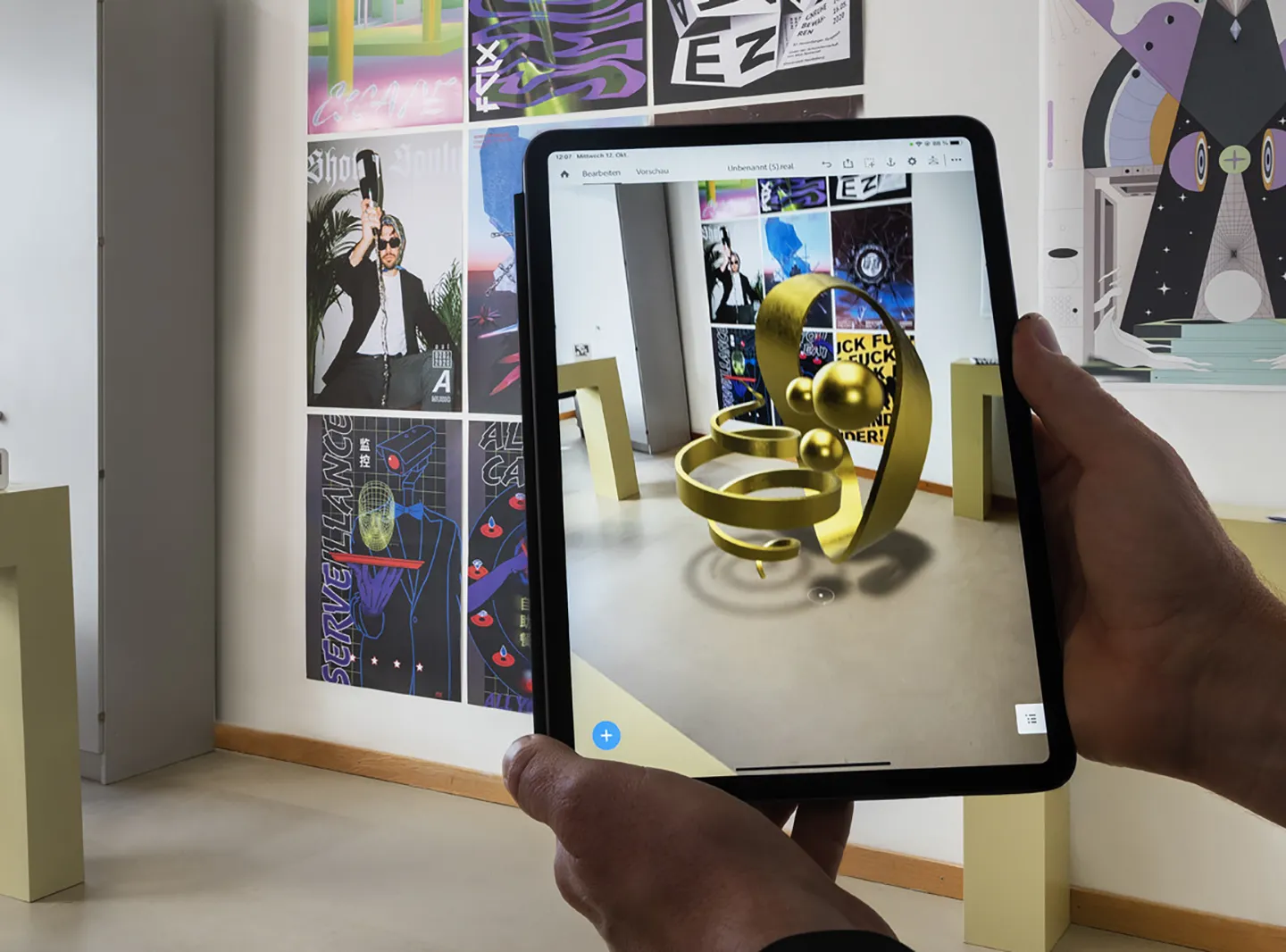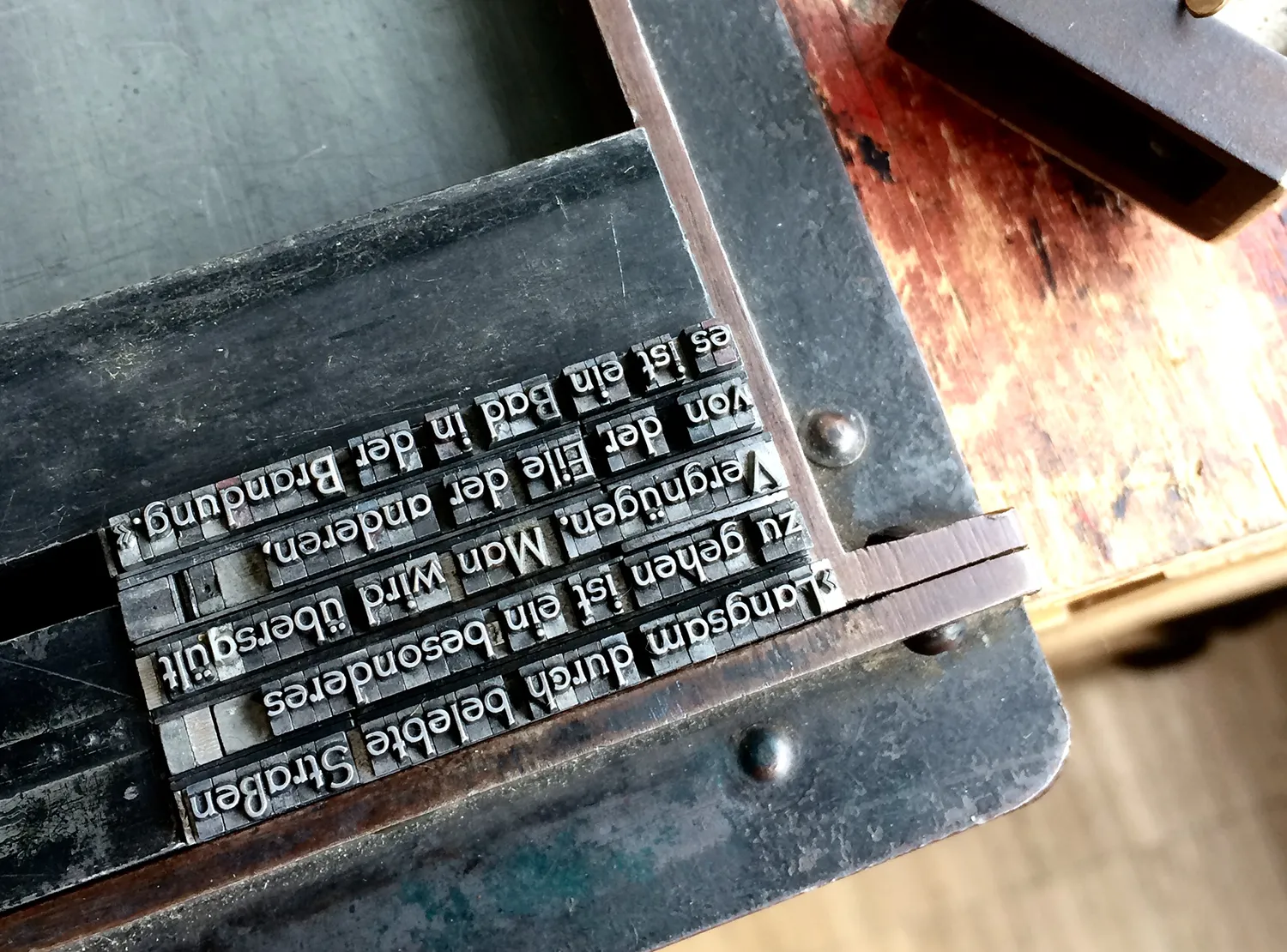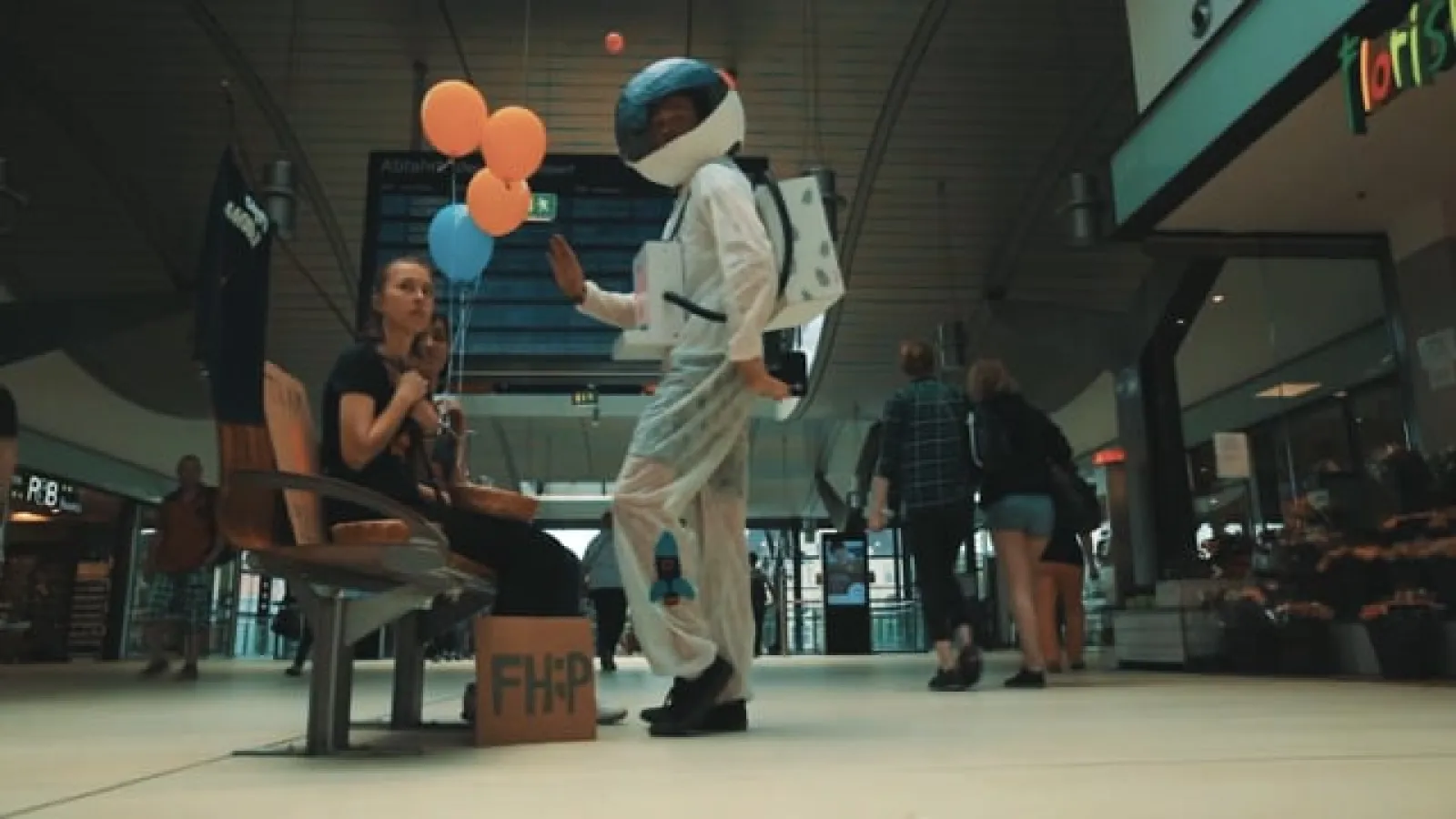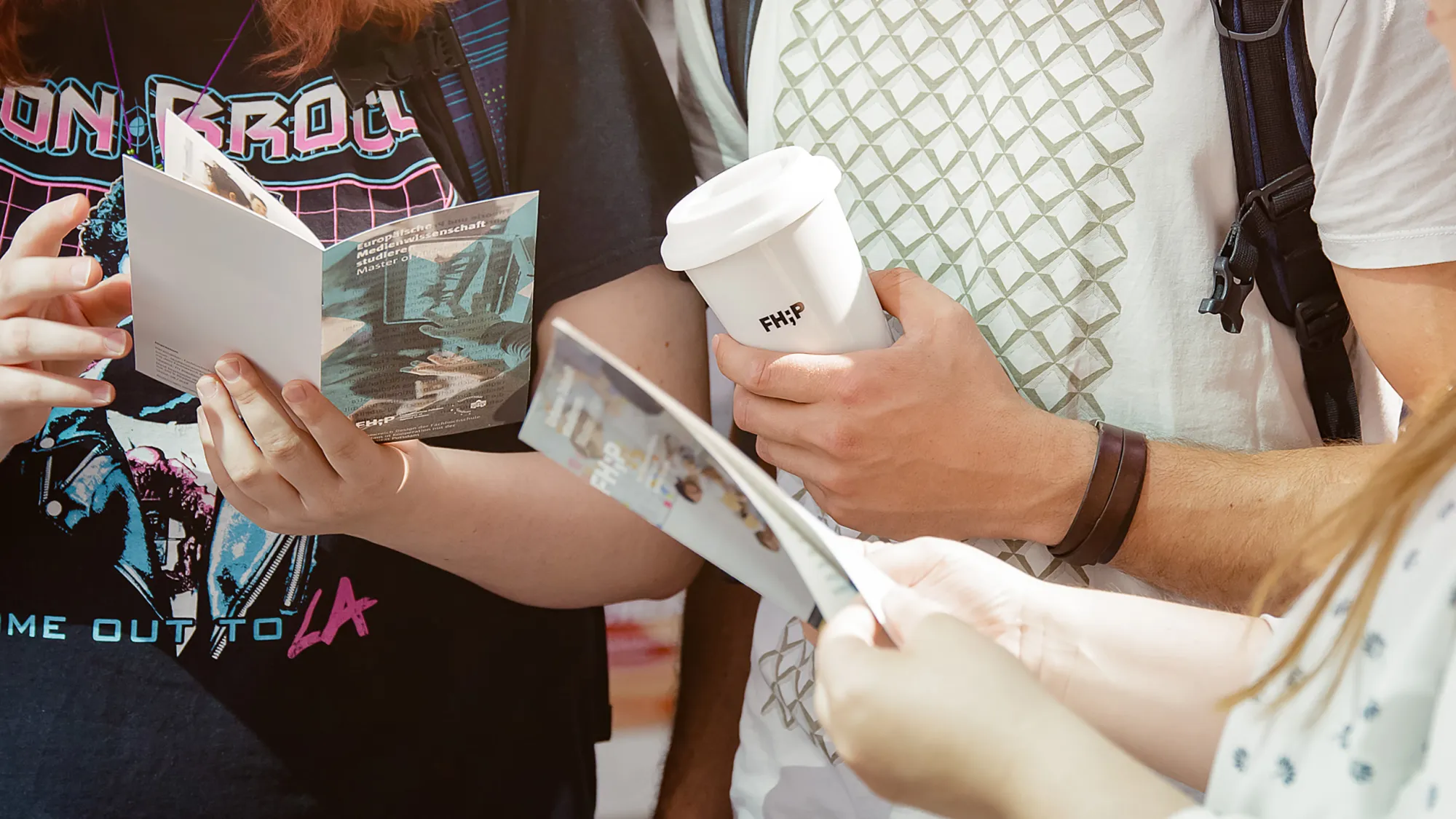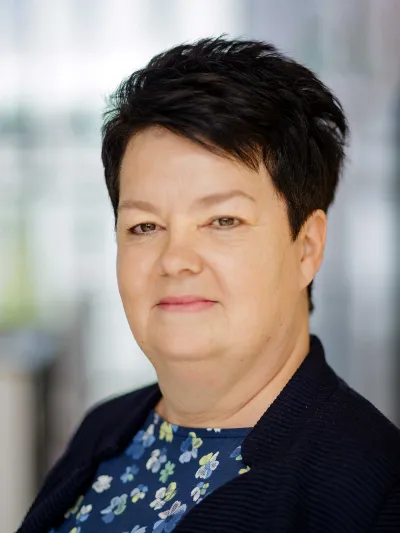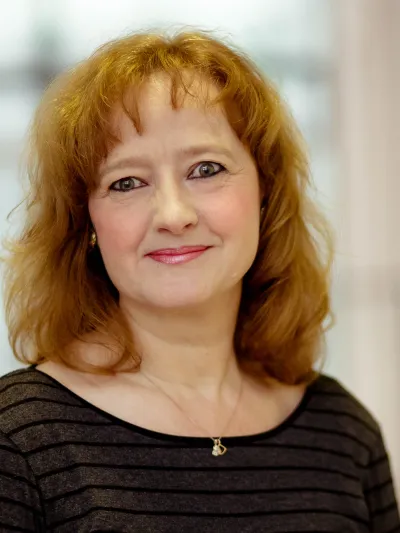From the smallest character to a complex campaign – the task of communication designers is to convey information, messages and news in an exciting and emotional, but also clear and understandable way. We prepare you for the diverse professions in the creative and media industry.
Communication Design (BA)
8 semesters, including a practical semester
15/05 – 15/07 (restricted admission)
240 ECTS credits
Profile
There are many good reasons to study communication design at the University of Applied Sciences Potsdam:
Broad spectrum of subjects
With our 22 professors and their teaching areas, we are one of the largest design faculties in Germany. We combine the relevant design disciplines into a broad field and thus offer you a future-proof career perspective.
Individual focus
You design your studies yourself and we support you in doing so: You create your individual course of study from a wide range of courses. You can also choose seminars from our product and interface design courses.
Family atmosphere
Our campus is the place where teaching, research and study take place. You develop your projects and ideas in close exchange with the lecturers. The FHP is located in Potsdam and only a few kilometres from the cultural metropolis of Berlin.
Design for future
On the one hand, our degree programme is the space where everyone develops their own future, and on the other hand, we shape the future of our society together. Starting with new technologies and topics, this leads us directly to the great challenges of our time.
Making dreams come true
In design studies, good questions become themes. Together we develop forms, media and formats from your ideas. We teach you the necessary methods and techniques and pave the way for a future in the creative industries.
Place of ideas
Our campus is full of inspiring people, spaces and situations: Here we try things out, conceive, discuss and realise. The perfect place for big ideas!
Communication Design at the University of Applied Sciences Potsdam
Our degree programme is all about developing your own distinctive designer personality. Posters, typefaces and books, but also infographics, logos, photography and animation are created here. From the classic analogue medium to various digital formats and mixed reality, everything is included. You learn conceptual design, but also craftsmanship and creative thinking in the context of the social, cultural and technological challenges of our time. You put together your ideal mix from the diverse offers of the communication design degree programme to achieve an individual and strong position as a starting point into your professional life.
Is this degree programme right for me?
Infotag & Mappenberatung am 27. Januar 2025
Am Infotag des Fachbereichs Design erhalten Studieninteressierte und Eltern wichtige Informationen zum Studium und zur Eignungsprüfung für die Bachelor-Studiengänge Interfacedesign, Kommunikationsdesign und Produktdesign, können Fragen stellen und Lehrende wie Studierende kennenlernen.
You bring these qualities with you
- Enjoy design, art, culture, media, people and technology
- Fun in developing new ideas and concepts
- Creativity, independence and curiosity
- Ability to communicate and work in a team
Podcast of the Campus Specialists
Rebekka and Toni explain everything prospective students need to know about the product and communication design degree programme. In addition to tips on aptitude tests or the study process, they give insights into their student life.
Showcase
Let yourself be inspired! In our virtual showcase you will find current projects and works from the courses of study of the design department.
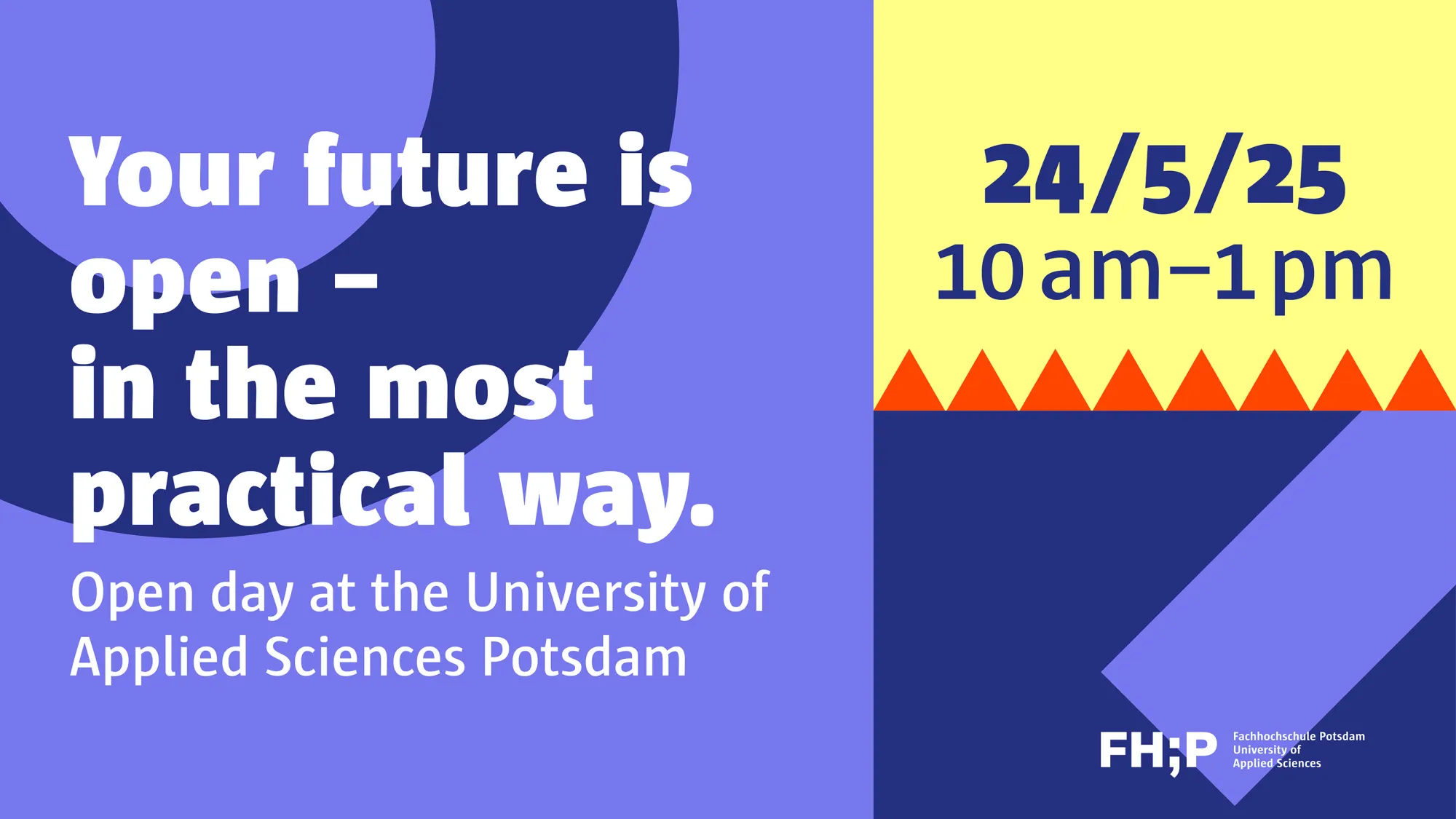
Information day 2025: We are opening our doors
Open Day at the University of Applied Sciences Potsdam: On the 24th of May 2025, you will get to know the diverse study programmes at our university, explore the campus and gain exclusive insights into our modern laboratories and workshops.
Take the opportunity to talk to students and lecturers in person and look forward to a varied programme.
Our goal
With our degree programme, we want to impart solid specialist knowledge and develop highly individual design action and expression skills. Our graduates should be able to make well-founded design decisions and be equipped with communicative skills. Our ideal, however, is for designers to develop a sense of ethical and social responsibility in addition to their design skills.
Our idea: Study as an event field
We divide the programme into two study sections: The first three semesters, which serve to teach the basics and provide orientation, and the following five semesters, which can be used for personal consolidation or further exploration.
And we have a few specialities: We don't have year cohorts, which means that with us you study together with people who have already gained a few semesters more or less experience within a study period. All seminars in the design basics, the theoretical subjects and the workshops are originally interdisciplinary, i.e. they take place together with students from the other design degree programmes in product and interface design – this enriches the perspective enormously. And speaking of interdisciplinarity: the fact that our students can (but do not have to) take almost half of their design courses in our other degree programmes (i.e. interface and product design) enables us to offer highly topical combinations of skills beyond the specialist areas. In addition, we have no fixed timetables, which – admittedly within certain regulations – allows students to study according to their own interests, which in turn increases motivation (and mood) immensely.
You can find more details about the study structure and the two study sections here.
Our claim: Design as a field of research
We understand design as a form of artistic research that is conducted and reflected upon together with professors.
We plan design experiments and use them to force formulaic aesthetic discoveries; we conceive visual inventions and develop questions about communication culture, for example; and we formulate design theses about the world, markets and society on the basis of our acquired artistic knowledge. The alert observation, classification, cataloguing and evaluation of visual phenomena of everyday culture is one facet of design research; and how can such design patterns be formulated in (generally) valid models?
But don't worry: we don't do all this as an end in itself for design, but because we know that (self-)aware, capable and reflective designers enjoy the very best prospects for a fulfilling future in the dynamic media industry.
You can find out more about our research fields and questions here (soon).
Contact
The colleagues at the student counselling service provide information to prospective students, first-year students, parents, teachers and students on all general questions about the degree programme. If you have specific questions or concerns about the bachelor's degree programme in communication design, please contact the subject counselling service.
Subject Counselling Service
These degree programmes might also interest you
More courses| Department | Degree programme | Teaching language | Start of study | Application deadline |
|---|---|---|---|---|
| |
Communication Design (BA) | German | Winter semester | 15/05 – 15/07 (restricted admission) |
| |
Design (MA) | German | Summer semester, Winter semester | 15/06 – 15/08 and 05/02 – 02/03 (restricted admission) Registration for the qualifying examination:
by 15/06 for the winter semester / by 15/12 for the summer semester |
| |
European Media Studies (BA) | German | Winter semester | until 15/07 at the University of Potsdam (admission restricted) |
| |
European Media Studies (MA) | German | Winter semester | until 01/06 at the University of Potsdam |
| |
Interface Design (BA) | German | Winter semester | 15/06 – 15/07 (free of admission) |
| |
Product Design (BA) | German | Winter semester | 15/06 - 15/07 (free of admission) |
Career Prospects
Career prospects
The career profile in communication design is as diverse as our teaching areas and your talents and interests. Communication designers work in agencies and design studios, in the cultural sector, in start-ups and companies or are self-employed. By specifically setting your own distinctive focus in your studies, you will develop your own profile and a strong portfolio.
Professional fields: A broad and exciting field
From specialist to generalist, everything is possible – and it is almost always about inventing images and visual worlds, telling stories and information visually. This is a very broad but also exciting field with ever new professional perspectives. Here are a few examples:
- Photographers work in advertising and journalism, but also in artistic professions. They tell stories with expressive and unmistakable images. A picture is taken in a fraction of a second, preparation and post-production take much longer and are often an important and exciting part of the work.
- Illustrators work in an editorial or artistic context, but also often in advertising. Stories and interviews are illustrated, covers of magazines and novels condense complex content into a memorable and powerful image. There are illustrators as independent artists but also as employees in agencies and editorial offices. Many graphic designers use illustrative elements in their daily work.
- Art directors in design and advertising agencies develop visual ideas and concepts. They present the communication concepts to clients and conduct the concert of texts, images and graphic design. In editorial offices, they also design fashion spreads or the entire graphic appearance of an issue.
- Corporate designers take care of the long-term brand image and its strategy. They not only develop logos but also design a complex interplay of very different graphic elements that make the appearance of a company or organisation unmistakable.
- Editorial designers design books and magazines, but they are also at home in digital media. Here it is a matter of structuring multi-layered content and bringing it together in images and texts. From exhibition catalogues to magazines, there is a wide range of possible projects that also require intensive consideration of the content.
- Information graphic designers give data and information a face and ensure that we can see through the most complicated contexts. Information design often takes place at the interface with illustration, and editorial offices and media companies are often the clients.
- We are all graphic designers and of course there is a lot of overlap between all the professional fields mentioned here. And so it's not surprising that many graphic designers offer a bit of everything for their respective clients. Small design studios in particular are often looking for »all-rounders« who see themselves as graphic inventors.
- Motion designers used to be more at home in film and television. Nowadays, however, there are hardly any media in which images cannot move. From graphic animations on the internet to augmented reality posters and classic animated films, graphic design meets timing, rhythm and sound.
- UX designers design and conceptualise the experience of users of interactive applications. Since our students can combine their course choices from seminars in communication design and interface design, there are many communication designers who specialise in the interactive area of communication design.
- Packaging designers give products a form and do not only have to consider aesthetic criteria. Technical criteria but also questions of sustainability are an important part of the design work on a project. Packaging is often the face of a brand and makes a decisive contribution to the branding of a product.
- We are all typographers , because communication design without words is rare. But there are designers whose great passion lies in the field of design with text and type. This is achieved quite classically in theatre posters or poetry collections, but good typography is also crucial in orientation systems and on the internet.
- Type designers give typefaces a form – character by character. The development of a typeface always balances the criteria of legibility and uniqueness. When the typeface is finished and launched on the market, it is the starting point for new designs by other designers.
- Web designers are often at home at the interface of interface and communication design. Today, hardly any brand or media presence is conceivable without the internet. Yet »the internet« has long since ceased to be just one place. The multitude of forms and technologies are a daily, exciting challenge.
- Exhibition designers create with space. From museums to flagship stores, from trade fair presentations to stage sets, the boundaries in this field of design are fluid. But whenever text and images come into play, communication designers are also involved.
Master's programme
Graduates of the bachelor's degree programme in communication design can expand their knowledge and acquire specialist skills in a further degree programme. The master's programme in design focuses on scientific and artistic research. In this degree programme, you deal with specific research questions and work on your own and joint projects. You can then pursue the path to a doctorate.
The six degree programmes in the design department
More courses| Department | Degree programme | Teaching language | Start of study | Application deadline |
|---|---|---|---|---|
| |
Communication Design (BA) | German | Winter semester | 15/05 – 15/07 (restricted admission) |
| |
Design (MA) | German | Summer semester, Winter semester | 15/06 – 15/08 and 05/02 – 02/03 (restricted admission) Registration for the qualifying examination:
by 15/06 for the winter semester / by 15/12 for the summer semester |
| |
European Media Studies (BA) | German | Winter semester | until 15/07 at the University of Potsdam (admission restricted) |
| |
European Media Studies (MA) | German | Winter semester | until 01/06 at the University of Potsdam |
| |
Interface Design (BA) | German | Winter semester | 15/06 – 15/07 (free of admission) |
| |
Product Design (BA) | German | Winter semester | 15/06 - 15/07 (free of admission) |
Study Structure
Course of studies
The bachelor of arts degree programme in communication design is a full-time programme lasting eight semesters. At the centre of the study programme are:
- Common, generalist basic training
- Individual, interdisciplinary course selection
- Integrated lectures and exercises
- Technical and craft practice in the workshops and laboratories
- Interdisciplinary project work and with practical partners
- Supervised student projects and exercises
Find out more about the concept, design principles & theory of our design degree programmes here.
In the module handbooks, study and examination regulations and statutes of the design department (valid until summer semester 2025), you will find the module overview, a detailed description of the modules and study contents, the study plan and the statutes for determining the course-related aptitude for the study course in communication design. New study and examination regulations will apply from winter semester 2025/26. They will be published shortly.
Course of study and modules
In the first semesters, design basics, sound technical skills and theoretical principles are taught, project experience is gained and professional orientation is provided. The design and workshop modules provide basic training tailored to the course. The courses of all three degree programs Interface, Communication and Product Design are taught across all degree programs. The course demands and promotes individual focus areas through a distinctive system of electives.
The "Reflection" module is at the center of the course. In a discussion with lecturers, you present your career to date, draw up a summary and plan your further studies.
The following semesters are strongly characterized by design work in predominantly project-oriented tasks. Here you can set your own focus. You have the opportunity to specialize and deepen certain topics or skills. Or you can opt for a broad-based course of study and take part in many different courses in different areas or other design courses. Our compulsory elective principle makes both options possible for you.
An entire semester is reserved for the internship. Here you can gain practical experience in agencies, companies or in research.
The Bachelor's thesis, which is completed during the eighth semester, concludes your studies.
(The module structure was adapted as part of the reaccreditation process and will apply from winter semester 2025/26 - SPO2025).
Exemplary study programme
The teaching concept of the Department of Design offers students a highly individualised course of study. Each semester, students have the opportunity to freely choose their courses (according to the module plan). They have the opportunity to set their own priorities in their choice of subjects and courses and thus individually develop and deepen their own inclinations and competences. We present a possible course of study here for your orientation. However, your individual path through the degree programme can and should deviate from this plan!
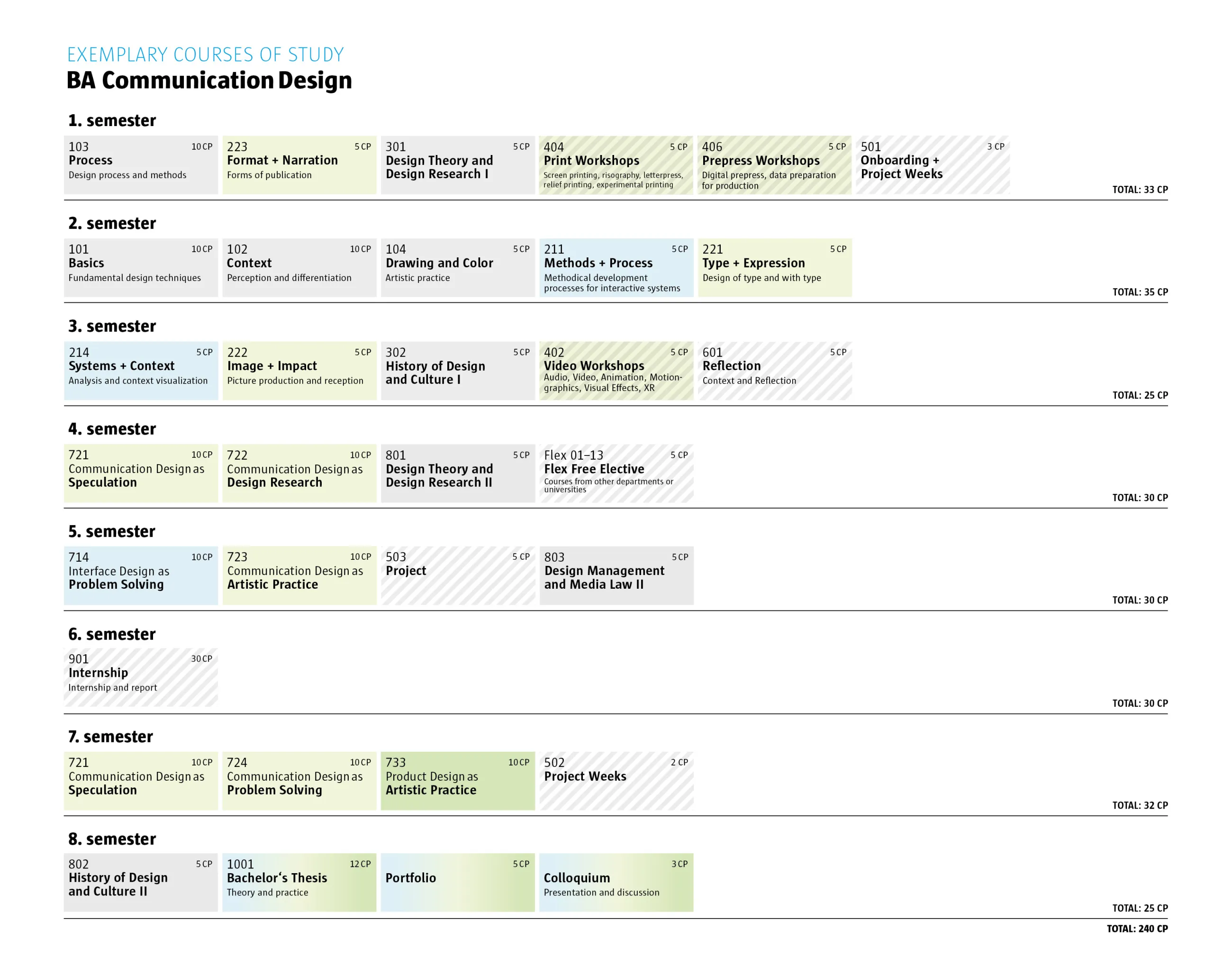
Teaching Areas & Workshops
The eight teaching areas in communication design
The eight teaching areas are the backbone of our degree programme. They range from photography, infographics and illustration, experimental graphic design to typography and font development, to editorial design, branding and signs as well as motion graphics.
Our workshops
In the carefully equipped teaching workshops of the study programme, students can realise their own projects with professional equipment. This brings to life our claim of a solid craft and technical education and supports the idea of a practice-oriented degree programme.
Bookbinding workshop
You could also call it »further processing paper«: Friederike Goll accompanies students in her workshop as they fold, crease, sew, glue, press, punch, stack and cut. Here, paper and cardboard are turned into book objects, notebooks or folding sheets.
Photo studio and labs
The photographic workshops are the domain of Kathrin Katzek. Our photo studio offers plenty of space for the production of studio shots with various flash systems, coving and backgrounds on around 130 square metres. For the right camera equipment, we run a lending service exclusively for students at the department. And those who would also like to experience how analogue black-and-white development works from film and on various photo papers can do so in our photo labs.
Graphics Lab
Our graphic lab is the space for graphic experimentation. It is supervised by Felix Walser and allows various printing technologies: monotype (letterpress), screen printing for formats up to DIN A0 and a carousel for printing on T-shirts. But our pride and joy are two risographs in A3 format and – a rarity in Germany – in A2 format!
Colour Management and (Fine Art) Print
How does the digital image get onto paper without any nasty surprises? Christine Mangelsdorf introduces electronic image processing and digital colour management on calibrated systems and then accompanies the output. Our large-format printers allow C-prints on different materials and in proof quality.
Audio/Video Labs
The studios under the direction of Jan Schütze offer various technologies for professional recording and digital post-production on a total of approx. 200 sqm: an audio studio with a voice-over booth, a high-end trick table for stop-motion recordings, a professional video studio with green-screen equipment and various editing suites. And similar to photography, we also operate a loan of professional equipment for students in the department.
Graphic-AR Lab
In our latest workshop we are testing experimental technologies in the field of mixed reality and AR (Augmented Reality). This innovative interface between digital and analogue space will become an important field of activity for designers in the future. Ricardo Meyer introduces the basic software and hardware.
Typography workshop
We are one of the few universities that still has a traditional letterpress workshop where we combine analogue typesetting techniques with the digital present. Led by our professor of typography Christina Poth, this workshop is both a hijack into the past and a seduction into the future.
Application & Contact
Dates & requirements for your application
The most important deadlines, dates and admission requirements for the bachelor's degree programme in communication design are compiled here. You can find out which steps you need to take for a successful application in the next section.
Dates
- 24th of May 2025: Open Day at the FH Potsdam
- 27th of January: Info day for design degree programmes with portfolio advice
- until the 01st of April: register for the qualifying examination
- until the 15th of July: submit online application
- until the 15th of July: apply for a higher semester to continue a degree programme you have started at the University of Applied Sciences Potsdam
Access requirements
- General university entrance qualification according to the Brandenburg University Act: General university entrance qualification or entrance qualification for studies at universities of applied sciences or previous vocational training recognised as equivalent.
- Passed aptitude test
This is how you apply!
In the following, we explain which aspects you should pay attention to from the registration for the qualifying examination to the matriculation (enrolment).
Further information
The following links provide you, and especially international applicants, with further information on the topics of application and enrolment at the University of Applied Sciences Potsdam.
International applicants
You would like to apply for studies from the first or a higher semester and have acquired your school-leaving qualification and/or university degree abroad? Then you can have degrees and achievements acquired abroad recognised and study with us.
Application & Enrolment Procedure
The application and study service provides information and advice on general questions regarding the application process, admission and enrolment at the University of Applied Sciences Potsdam, application for a higher semester, but also on topics such as compensation for disadvantages, part-time studies, waiting semesters and hardship applications.
Contact & Services
The student counselling service provides information and advice on general questions about studying as well as on topics such as choosing a course of study, application, enrolment and study organisation.
For subject-specific questions on module content, credit transfer, examinations or specialisations in the Communication Design degree programme, the subject counselling service is the right place to go.
Subject Counselling Service
Study and Examination Service
Study Info Service
studien-info-service@fh-potsdam.de
bewerbungs-service@fh-potsdam.de
campuskarte@fh-potsdam.de
Study Service
studien-service@fh-potsdam.de
Exam Service
pruefungs-service@fh-potsdam.de
Family Affairs Commissioner
Office hours
Tue and Thu 9.30 am – 1.30 pm
Commissioner for University Employees with Impairment
Office hours
by arrangement
